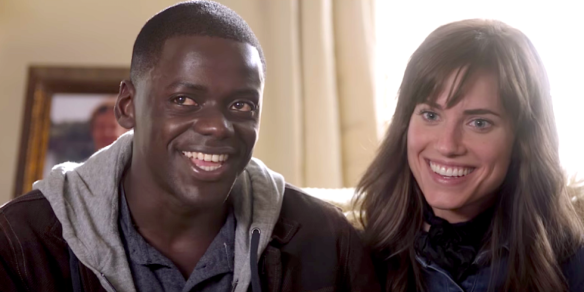
Maybe it was just me but I wasn’t completely psyched for a new Kong movie. Large CGI mammals whether they are singing jazz in Jungle Book or surviving ship wrecks in Life of Pi look either too fake or too cheesy. I’m always hyper aware that they’re not real and I’d prefer filmmakers to use an actual tiger. Now there’s no 100-foot ape Warner Brothers could have pulled as a practical Kong but the key phrase in the title Kong:Skull Island would be the latter half. While Kong is the center piece of this lost island in the South Pacific, there’s so much more there than the titular ape. The military and science expedition that arrive may have been welcomed by a fierce swipe of Kong’s hand wiping out most of the team but there are far worse species lurking in the jungle that they must worry about and that’s where the fun begins.
It’s hard not to notice the huge push to distance this adaptation from Peter Jackson’s 2005 King Kong. Jackson’s goal was to remake the film from his childhood and make it a rightful epic. It’s truthful to the 30’s setting but has the edition of all creatures on the island namely dinosaurs as Kong’s adversary at least until man proves to be the real foe. There’s the odd woman/ape romance with the blonde heroine which elongates the plot into this 3 hour plus narrative. Skull Island first move is to scrap the time period that character is so entrenched in. It’s 1974 and Vietnam is wrapping up. It’s blatant that the filmmakers are going full Apocalypse Now with the visual imagery of the rising sun, helicopters dropping bombs and Samuel L Jackson’s war hungry Colonel Packard is a clear Kurtz parallel. Besides being the breath of fresh air by including the new decade that has funky ties and classic rock, Kong is a perfect allegory for Vietnam as this expedition, well intentioned or not is ill-prepared and unable to stop the force of the ape. This is also a movie that moves at a clip. They deliver a tight 2-hour action movie that wastes no time, giving you visual confirmation of Kong in the first five minutes. It’s a welcomed decision in my opinion because I don’t need a drawn out story. It’s an island with monsters, most of these people won’t make it out alive and I’m here to see their fight for survival. The downside of cramming in all these set pieces as well as characters (if you’ve seen the amount of actors’ names they fit on the poster you know), any emotional growth is thrown to the wayside or when attempted, doesn’t work. The few times to breathe and allow these character moments between the hired tracker Conrad (Tom Hiddleston) and anti-war photographer Weaver (Brie Larson) comes off as pointless. The ones who come out best are the biggest swaths of performance like Jackson or John Goodman who plays the crackpot scientist Randa who initiates this mission.
I may be saying the writing is a bit hollow but that’s not why you go see a blockbuster such as this. You’re there for the spectacle and Skull Island definitely delivers. With DP Larry Fong who is the real star here, creates breathtaking 360 battle sequences like Kong taking down helicopters, giant bamboo spiders that squash unsuspecting soldiers and the Skullcrawler attack in the elephant graveyard. The pristine special effects make the action such an immersive experience, something I can’t wait to see again and oggle. I, of course, am drawn to all the bizarre creatures designed to inhabit the island. While I can take or leave a mammal, I love me a CGI reptile because dinosaurs are forever. Moving away from the traditional T-Rex look Jackson went for, here it’s a Cloverfield, skeletal beast that charges at people on its two legs. Weird as hell but fascinating to behold. Even when not in the trenches the neon lighting choices of Vietnam, accentuating the cool British ruggedness of Hiddleston are much appreciated. From costumes to production design to special effects, all beautifully recreates both a specific time as well as a whole new place that time forgot. I’d hope you’d get something this good with such a massive budget.
This is a studio movie through and through. It moves and sounds like one with its protest rock soundtrack and obvious build up to a sequel/Marvel-esque world building. It has the pitfalls of film by comity, lacking a distinctive directorial drive but goddamnit if it isn’t a hell of a lot of fun to watch. We got the auteur Kong already and while you can feel the ambition, it’s still a slog. I’ll sacrifice a romantic storyline for well-shot explosions and beast battles. The anti-war, pro-environmental message come through naturally without the grand statements. The setting and scenario are strong even if there are too many characters to rightfully establish a lead. The movie knows how to have a good time. It’s comedic, it’s dark and it promises me more Godzilla in my future which is all I’m asking from any movie. I could care less about superheroes, this is the cinematic universe I’ve been asking for.


